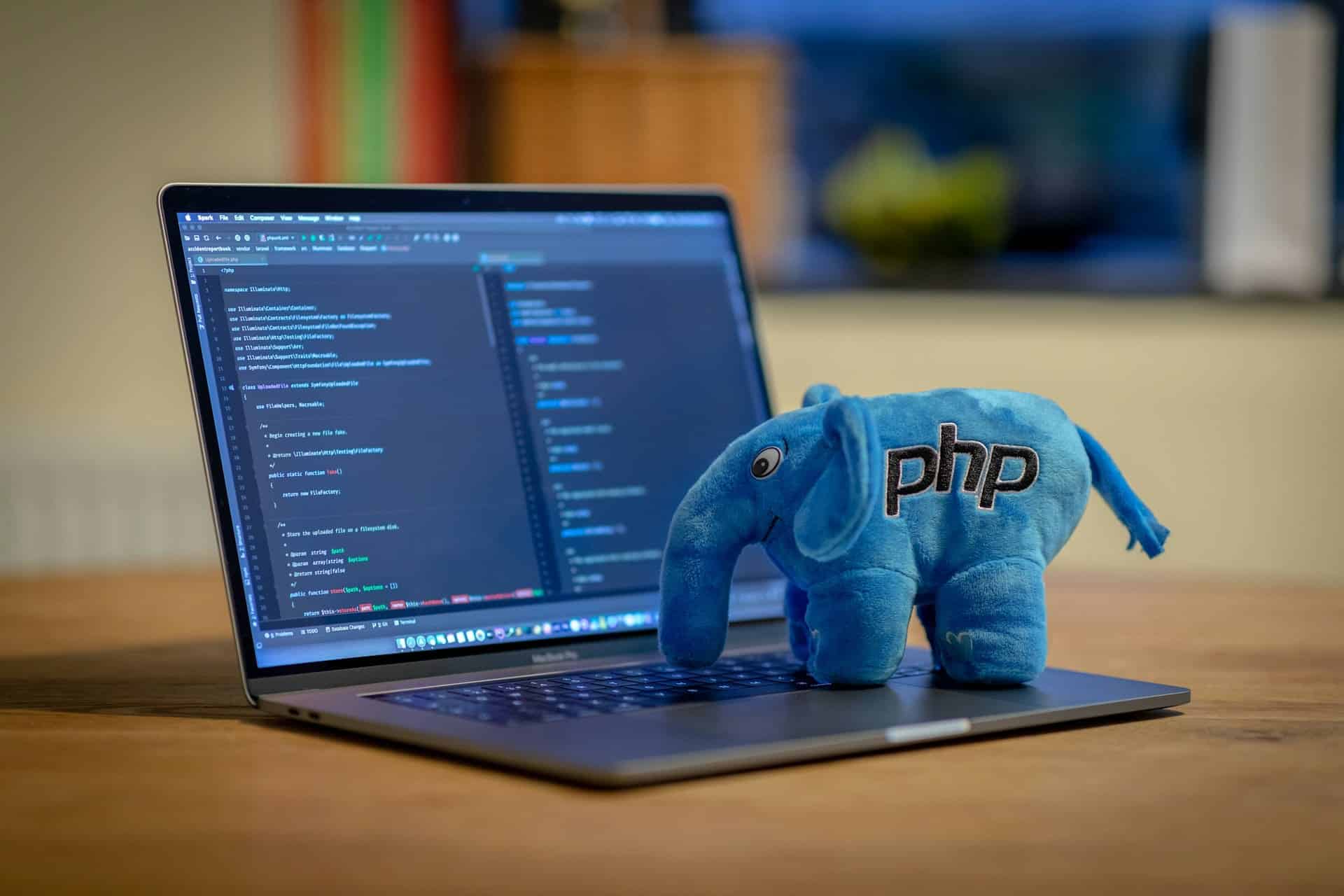Sure! Here’s the translation of your text into American English:
<div><p>A recent report from SiteLock reveals that websites are attacked an average of <strong>94 times a day</strong> and are visited by bots <strong>372 times a day</strong>. While many of these bots do not pose a threat, a percentage of them actively seek vulnerabilities, making it essential to maintain the security of web applications.</p><p>PHP, with a <strong>76.8% presence</strong> on the web, remains a fundamental pillar in application development. Its popularity makes it a recurring target for attacks, which makes it crucial to implement robust security measures.</p><p>This article outlines the essential strategies for strengthening the security of PHP web applications and reducing risks from potential attacks.</p><hr class="wp-block-separator has-alpha-channel-opacity"/><h2 class="wp-block-heading"><strong>PHP Version Management</strong></h2><h3 class="wp-block-heading"><strong>Always Use the Latest Version of PHP</strong></h3><p>Keeping the <strong>PHP version updated</strong> is one of the most effective ways to protect a web application. Each new version introduces security enhancements and fixes vulnerabilities.</p><p>To check if a version has reached its <strong>end of life (EOL)</strong>, it is recommended to review the official <strong>PHP Supported Versions</strong> page.</p><h3 class="wp-block-heading"><strong>Using Docker to Isolate Web Applications</strong></h3><p>If updating PHP is not a viable option, <strong>Docker</strong> allows for isolating applications in <strong>independent containers</strong>, reducing the risk of vulnerabilities spreading across different environments.</p><p>This technique is useful for running applications with older versions of PHP without compromising the security of other systems on the same server.</p><hr class="wp-block-separator has-alpha-channel-opacity"/><h2 class="wp-block-heading"><strong>Configuring PHP for Greater Security</strong></h2><h3 class="wp-block-heading"><strong>Disable PHP Execution in Unnecessary Directories</strong></h3><p>A recommended practice is to prevent the execution of PHP scripts in directories where it is not needed, thus reducing the risk of malicious code execution.</p><p>You can disable PHP execution in certain directories by adding the following code to a <strong>.htaccess</strong> file:</p><pre class="wp-block-code"><code><FilesMatch>
Order Allow,Deny
Deny from all
</FilesMatch></code></pre><h3 class="wp-block-heading"><strong>Properly Configure the php.ini File</strong></h3><p>The <strong>php.ini</strong> file allows for adjusting key security settings. Some best practices include:</p><ul class="wp-block-list"><li><strong>Disabling dangerous functions</strong> with: <br/><code>disable_functions = exec, system, shell_exec, passthru, eval</code></li><li><strong>Limiting script execution time</strong> to prevent denial of service (DoS) attacks: <br/><code>max_execution_time = 30 </code><br/><code>memory_limit = 128M</code></li></ul><hr class="wp-block-separator has-alpha-channel-opacity"/><h2 class="wp-block-heading"><strong>Using Libraries and Managing Dependencies</strong></h2><h3 class="wp-block-heading"><strong>Utilize Secure PHP Libraries</strong></h3><p>Using <strong>established libraries</strong> facilitates the implementation of security features such as authentication, authorization, and encryption. Choosing well-maintained and well-documented libraries reduces the likelihood of implementation errors.</p><h3 class="wp-block-heading"><strong>Keep Components and Dependencies Updated</strong></h3><p>Third-party libraries and frameworks can have <strong>vulnerabilities</strong>, so it is essential to keep them updated. Tools like <strong>Composer</strong> allow for efficient management and updating of dependencies:</p><pre class="wp-block-code"><code>composer outdated
composer update</code></pre><h3 class="wp-block-heading"><strong>Avoid Storing Passwords in Plain Text</strong></h3><p>Passwords should never be stored in <strong>plain text</strong> or in unencrypted databases. It is recommended to use secure <strong>hashing algorithms</strong> like <strong>bcrypt</strong>:</p><pre class="wp-block-code"><code>$password = password_hash('my_secure_password', PASSWORD_BCRYPT);</code></pre><p>This ensures that even if the database is compromised, the passwords remain protected.</p><hr class="wp-block-separator has-alpha-channel-opacity"/><h2 class="wp-block-heading"><strong>Application Security</strong></h2><h3 class="wp-block-heading"><strong>Do Not Rely on Cookies for Security</strong></h3><p>Cookies can be manipulated by users, so they should not be used as the sole method of authentication. It is recommended to <strong>reinforce security</strong> with additional mechanisms such as <strong>secure session tokens and server-side validations</strong>.</p><h3 class="wp-block-heading"><strong>User Input Validation</strong></h3><p>User inputs should be validated and sanitized to prevent <strong>SQL injections and XSS attacks</strong>.</p><p>Example of secure validation using <strong>PHP and PDO</strong>:</p><pre class="wp-block-code"><code>$stmt = $pdo->prepare("SELECT * FROM users WHERE email = :email");
$stmt->bindParam(':email', $email, PDO::PARAM_STR);
$stmt->execute();</code></pre><p>Additionally, it is recommended to use functions like <strong>filter_var()</strong> to validate data before storing it in the database.</p><hr class="wp-block-separator has-alpha-channel-opacity"/><h2 class="wp-block-heading"><strong>Security Audits and Monitoring</strong></h2><h3 class="wp-block-heading"><strong>Conduct Regular Security Audits</strong></h3><p>Web security is not a static process. It is recommended to perform <strong>periodic audits</strong> with scanning tools such as:</p><ul class="wp-block-list"><li><strong>OWASP ZAP</strong></li><li><strong>Nessus</strong></li><li><strong>Burp Suite</strong></li></ul><p>For larger web applications, it is suggested to hire <strong>ethical hackers</strong> who can perform penetration testing and discover vulnerabilities before they can be exploited.</p><h3 class="wp-block-heading"><strong>Utilize Logging and Monitoring</strong></h3><p>It is crucial to enable <strong>error logs</strong> and security event logging to detect potential attacks in real-time:</p><pre class="wp-block-code"><code>log_errors = On
error_log = /var/log/php_errors.log</code></pre><p>Additionally, tools like <strong><a href="https://systemadministration.net/how-to-use-fail2ban-with-wordpress-and-cloudflare-proxy-for-enhanced-security/" target="_blank" rel="noreferrer noopener">Fail2Ban</a></strong> can help <strong>block malicious IP addresses</strong> attempting repeated access to the system.</p><hr class="wp-block-separator has-alpha-channel-opacity"/><h2 class="wp-block-heading"><strong>Conclusion</strong></h2><p>Applying good security practices in PHP is essential to protect web applications against attacks and vulnerabilities.</p><p>📌 <strong>Key measures to implement:</strong><br/>✅ Keep the <strong>PHP version updated</strong><br/>✅ Use <strong>Docker containers</strong> to isolate applications<br/>✅ Configure <strong>php.ini</strong> to disable dangerous functions<br/>✅ <strong>Do not store passwords in plain text</strong><br/>✅ Validate <strong>all user inputs</strong><br/>✅ Conduct periodic <strong>security audits</strong></p><p>For mission-critical environments, using a <strong><a href="https://www.stackscale.com/es/nube-privada/" target="_blank" rel="noreferrer noopener">private cloud infrastructure</a></strong> like <strong>Stackscale</strong> allows for managing servers with <strong>secure default configurations</strong>, providing a robust platform for deploying and maintaining secure PHP applications.</p></div>Let me know if there’s anything else you need!

